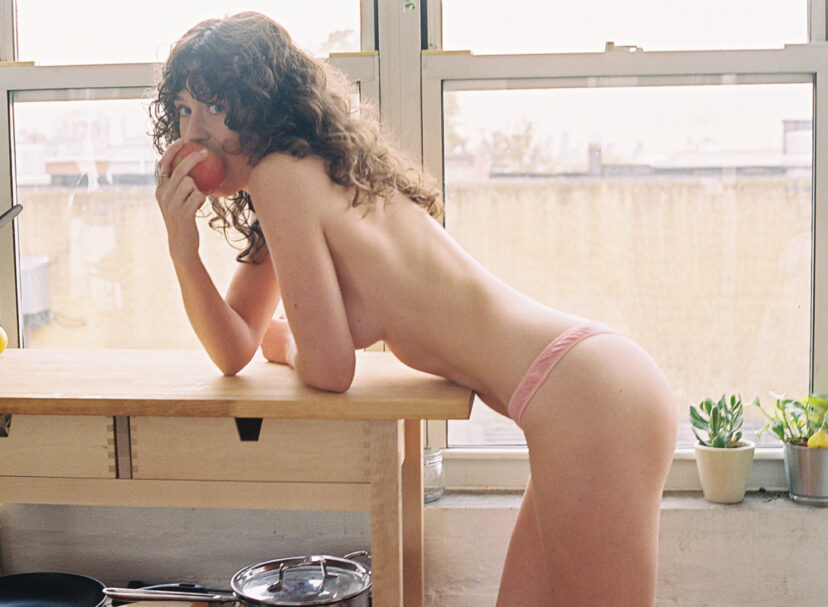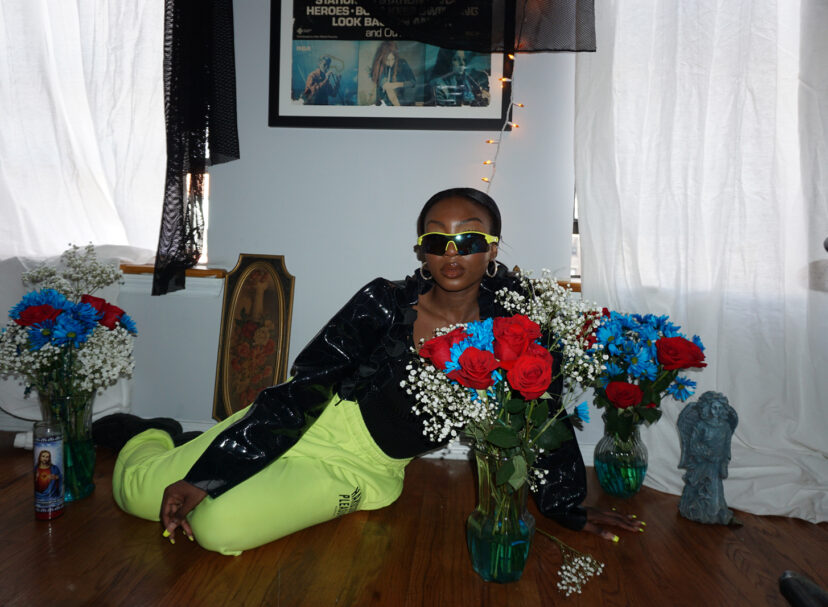Photography: Elisabet Davids
Text: Alec Coiro
Robert Geller was barely out of RISD when he found himself at a rehearsal for a Marc Jacobs fashion show he helped produce. It was at the Armory. The lights were huge; the speakers were huger. “When the music started and the lights went on and I saw the models walking down the runway, it was the essence of something really, really cool. I had tears in my eyes and goosebumps and it made me realize that I wanted to do my own thing.” Two years later he had started Cloak with Alexandre Plokhov. After going through all the awards, acclaim, and business headaches of Cloak, he now has his own label where he is able to focus on what he does best, being a designer.
I don’t feel like I’m an entrepreneur. I feel like I’m a designer. I like to design clothes and create an image. I don’t want to suddenly be the guy who runs the company with 400 employees.
Robert has been labeled a leader of the “sports luxe” scene by the fashion press, which makes sense considering he credits Raf Simons and his Belgian contemporaries as an early influence. But after chatting with Geller, it’s clear there is more to him than someone who started a trend. It’s more that in addition to being a gifted designer, Robert is a man for our moment. He is effortlessly cosmopolitan in international times. He is German, based in the U.S. working with a Japanese company — “married to a Brazilian,” he adds. Basically, he’s got the majority of the continents covered.
Robert fits into the moments and places where significant things are happening. You get a sense of this if you return to Geller’s foundational Marc Jacobs runway show and consider who else was present. “It was a tiny team, Marc, Richard Chai, Ana who’s now my wife, Natalia who’s one of my best friends, and three interns: Jack from Proenza and Isa from Nom de Guerre,” and Robert was the other intern. It was a moment at Marc Jacobs when something special was incubating. “Marc Jacobs to me was like a finishing school. You go to University and learn a lot about making a pattern and learning how to sketch, but you don’t really know how the fashion world works. You don’t understand how a season works when you start, where you get your fabrics. I was there for four seasons and really learned the cycle of things and the dynamic between what a production person does, what a designer does, what the accessories person does. You have an idea, but you don’t really know until you go through it.”



The Collection
A Robert Geller Original

While working with Marc Jacobs was obviously foundational, it does not seem to be Robert’s intention to cultivate the same sort of fashion empire Marc Jacobs created. “I don’t feel like I’m an entrepreneur. I feel like I’m a designer. I like to design clothes and create an image. I don’t want to suddenly be the guy who runs the company with 400 employees.” Unfortunately, he didn’t have this sort of stress-free freedom to design at Cloak, but he has been able to achieve it at his new label in large part through his partnership with the Japanese production company Onward. Working with Onward allows him the freedom to focus on actually doing the design work. It also affords him the opportunity deliver the couture-quality Japanese-made garments for significantly lower costs. “Having that kind of financial partner is really important because even very talented companies stumble on the lack of resources. Even if you have a really great season, you still have to find the money to pre-finance everything.” Most importantly, as Robert puts it, “It lets me be creative.” And perhaps equally important, “Nothing that I don’t design gets made.” Talking to Robert it seems the only downside to the partnership is the perennial mind-dissolving Japanese jet-lag.

While Robert seems well positioned to deliver us amazing clothes, this current phase of his design career does come with its own challenges. I wondered how he deals with things like seeing the aesthetic that he pioneered being so ruthlessly copied by upstarts. Robert paused for a second, and said, “It’s good. It kicks me in the ass to do something more forward. Stores come in and say there are people who have kind of caught up to your look. It made me now want to raise things to the level where people who don’t have experience with design can’t reach.” But it’s more than just Robert’s technical experience that sets him apart; there is also an evident thoughtfulness behind each new collection. Consider his Spring 2012 Collection, which Robert speaks about with genuine passion. “I like basing the collection on something that I’m interested in. I was reading a book about the Baader-Meinhof gang, and so I looked into student revolution and the whole generational change in the late ‘60s in Germany, which was a really fascinating time. During this time, although the Third Reich was over, there were still Nazi-minded people in the schools and the government, and this was the time when a generation said, ‘Enough. This is our generation, this is our Germany.’ It was really beautiful seeing a generation coming together and saying this is what we want the future of our country to be.” To me, the difference between a designer who begins a collection by studying what inspires a generation to awaken, and a designer who begins a collection by saying I want to do sports luxe could not be more obvious and stark.
In the end, though, with Robert it’s also very simple: he makes clothes that he likes: “Men’s Wear is something I always felt more comfortable with. It’s very personal: “Do I want to wear it? Do I think my friends would want to wear it?”

